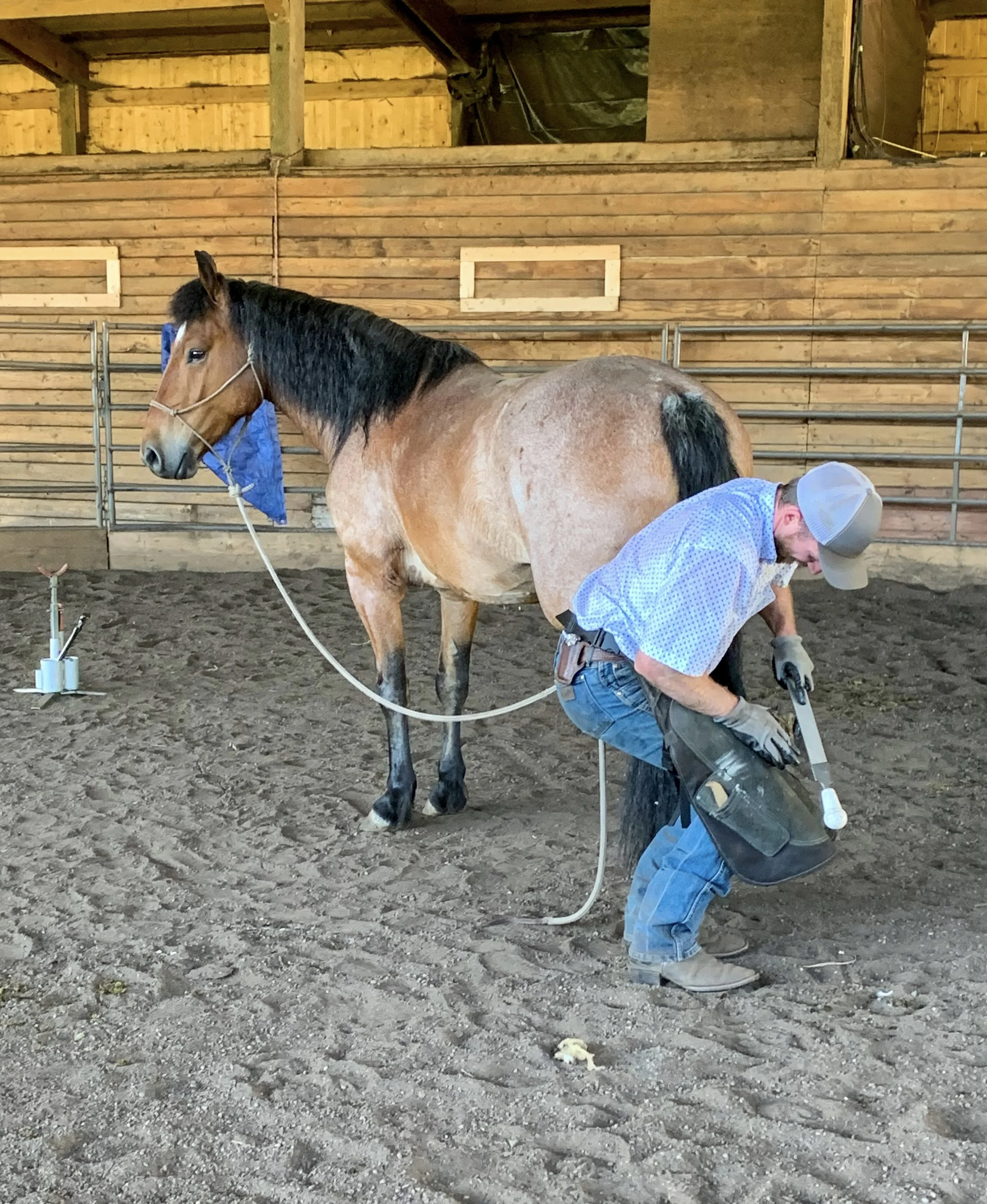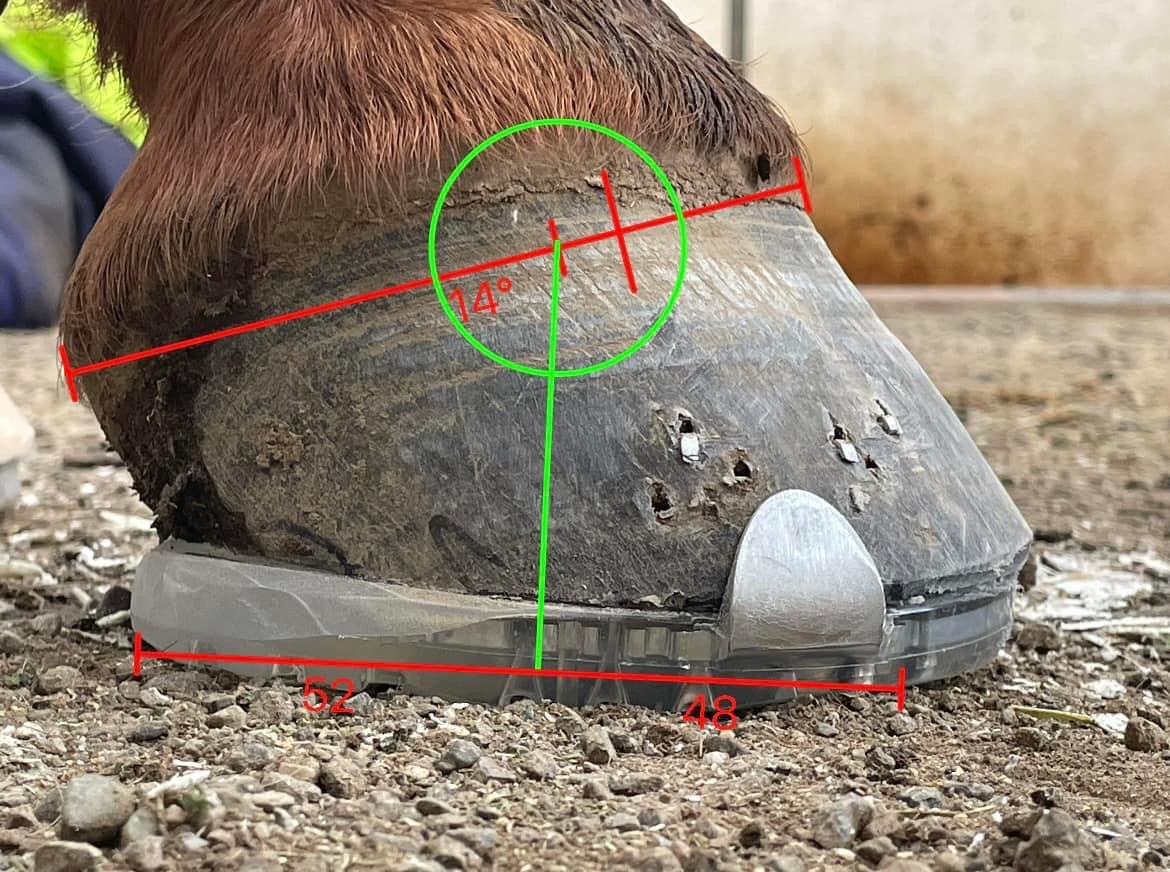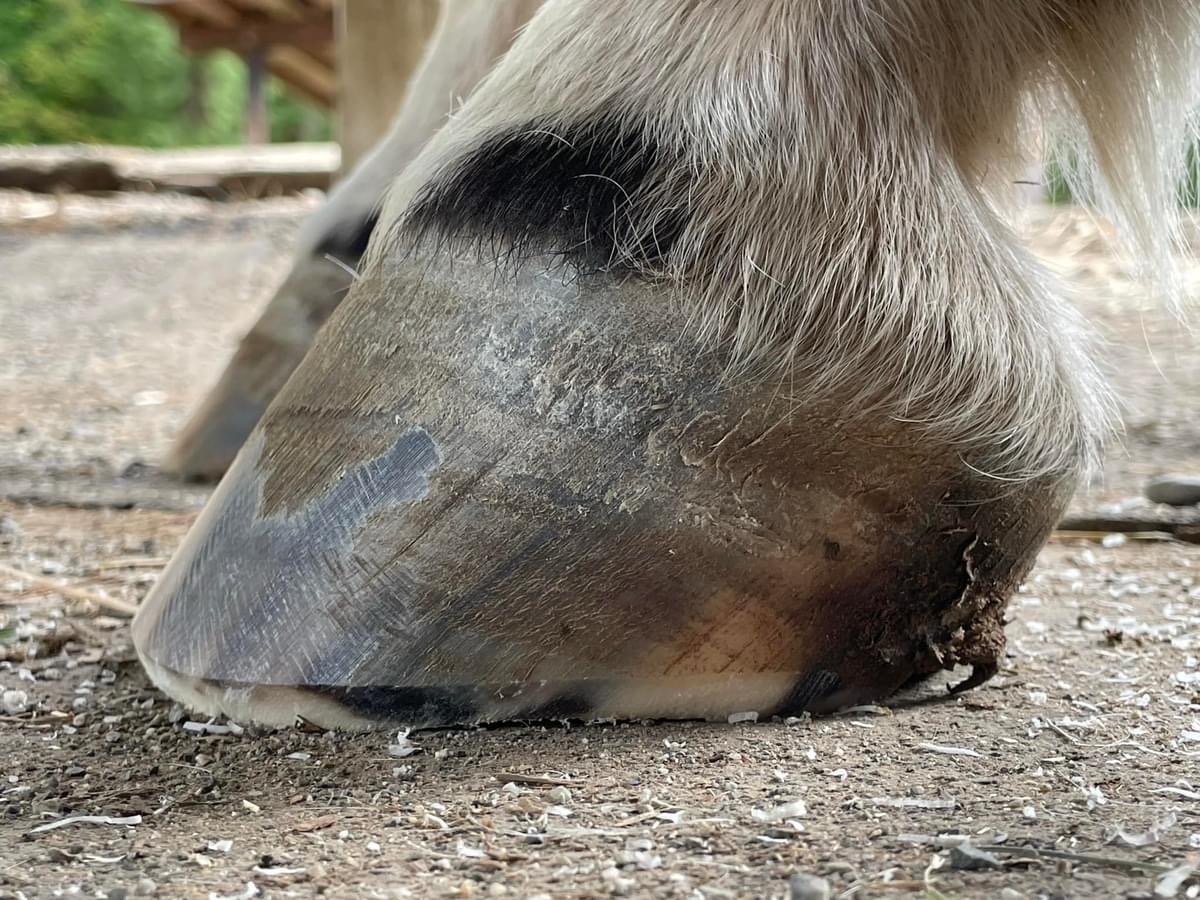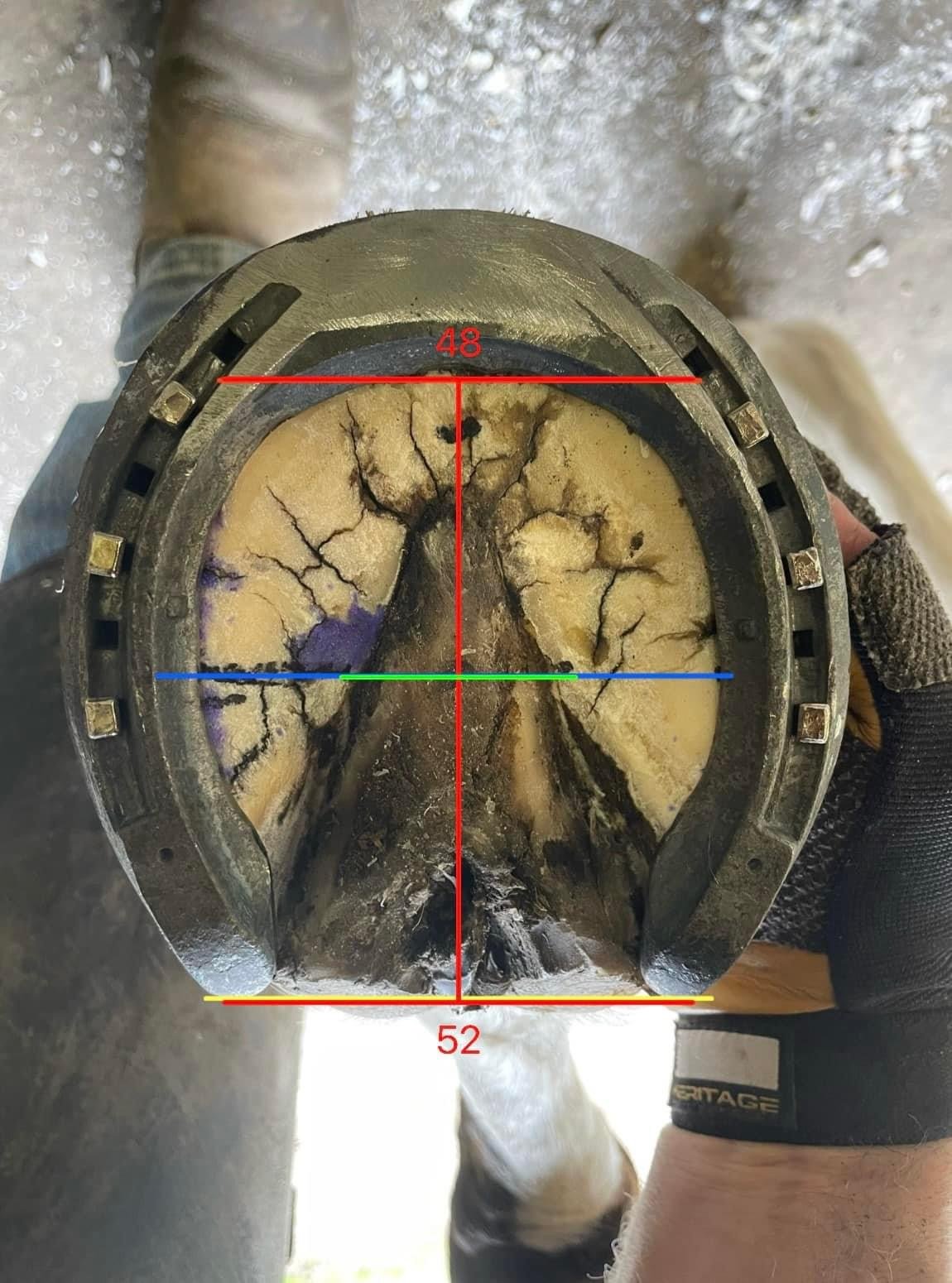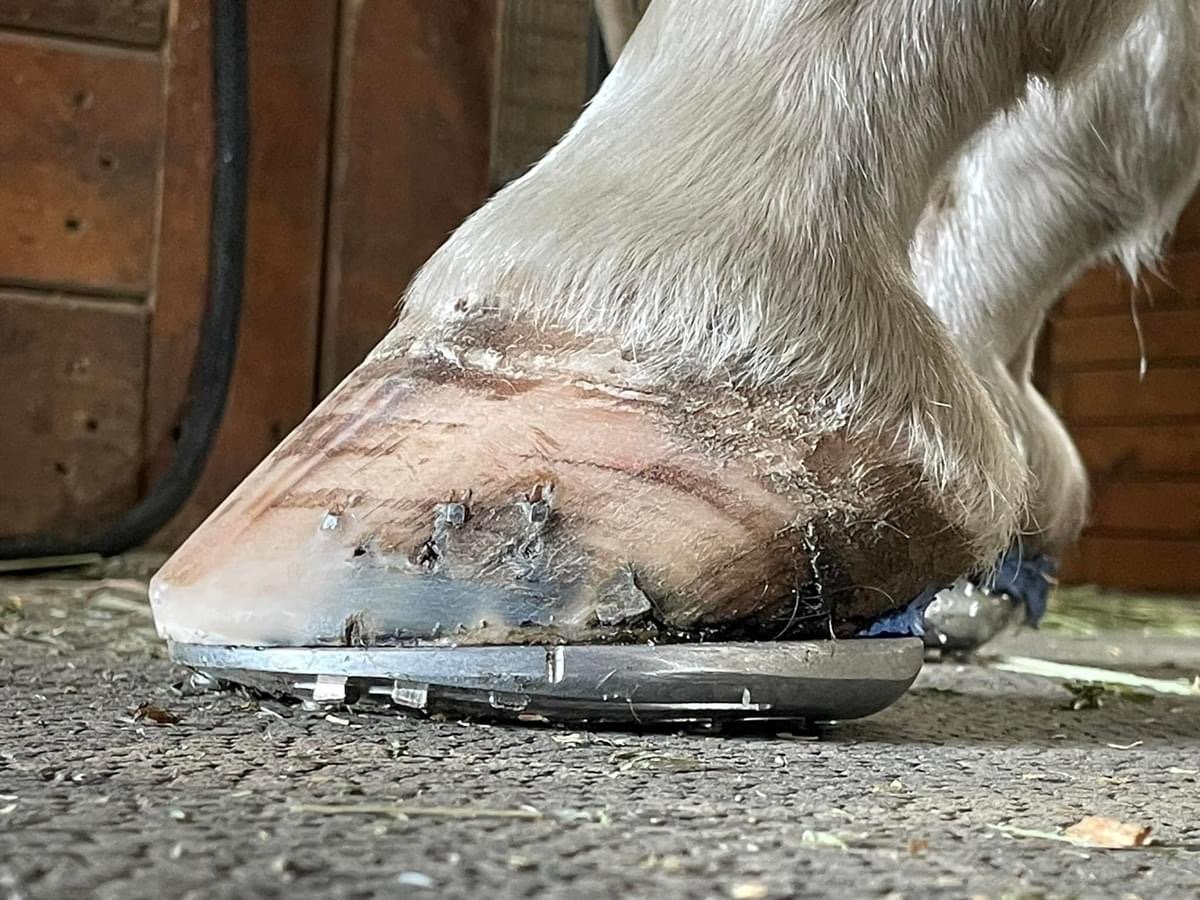Horse Shoeing and Hoof Care
Evan offers horse shoeing and barefoot trimming to Skagit, Island and Snohomish counties.
He follows the principles and research taught by the Equine Lameness Prevention Organization (ELPO). Evan continually expands his education in hoofcare and each year attends clinics and classes at the ELPO headquarters to expand his knowledge and skills. Usually working with the Equine Digit Support System, he also utilizes other various types of shoes depending on the pathology and the needs of your horse. Evan uses traditional steel and aluminum shoes as well as polyurethane composite horseshoes made by Easy Care including both nail on and glue-on varieties as well as custom packages.
Contact Evan at 360-551-3736 for pricing and availability.
Why would I want my horse to be barefoot?
Domestically kept horses do not live a natural life. They do not run wild overgrasslands, up to twenty miles a day. They do not eat a natural diet of grasses, forage, roots, bark, berries, for up to twenty hours a day. They do not walk and trot for hours, looking for salt licks, water, forage, or shelter. They do not shelter under trees or in ravines. They do not bond with a herd and play, or battle for dominance within the hierarchy .
Most domesticated horses live in dark caves, called stalls. They stand most of the day, by themselves. They eat two to three meals a day, usually from a large pile in front of them. They eat a mono diet of one or two types of hay. They are given supplements, often with molasses in them to make extruded pellets. Once in a while a two-legged predator comes out and barks orders, or murmurs sweet nothings, often with sweet treats.
“Natural” means as close to the conditions of nature that we can get. So “natural” hoofcare involves exercise—as close to ten miles a day of walking and trotting as possible, on rough ground; as natural a diet as possible—low sugar grasses, hays, and forage, fed throughout the day, on the ground; correct saddle fit is crucial, since carrying weight on their backs is unnatural stress. Natural riding techniques help the horse develop and use muscles to carry us with the least amount of damage.
Finally—a “natural” trim, which is based on the feet of the feral horse. A feral horse’s hoof is short, about 3 ½ inches from hairline to ground, regardless of the size, age, or breed. The walls are straight, neither scooping outward, nor caving in. The hoof walls support about 15% of the weight of the horse. The toe angle may vary from 45 to 60 degrees; and the degree of angle may differ from foot to foot. It may also be different than the pastern angle. The frog is on the ground, spread out over about a third of the hoof on compression, and bearing about a third of the weight of the horse. The bars and heel buttresses are in active contact with the ground, as part of the hoof wall. The rest of the sole is also on the ground on compression. The whole sole springs back to a slightly concave shape when unloaded.
